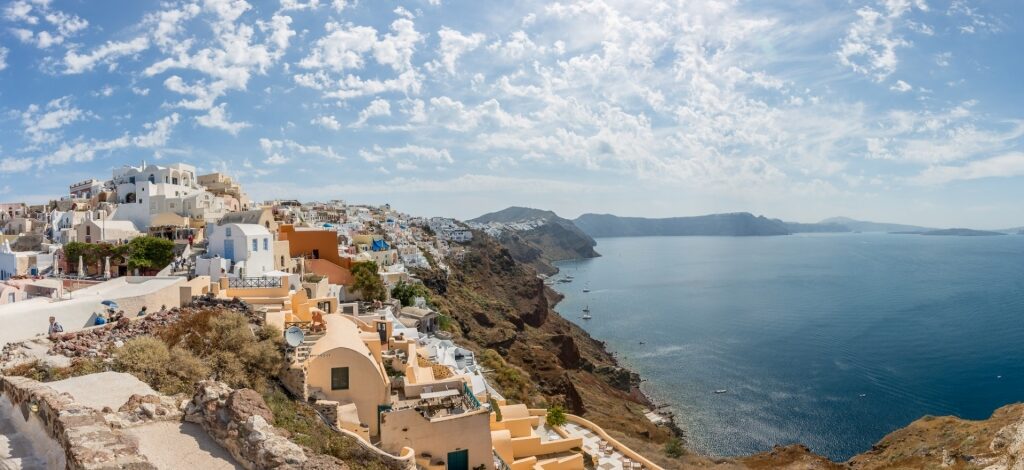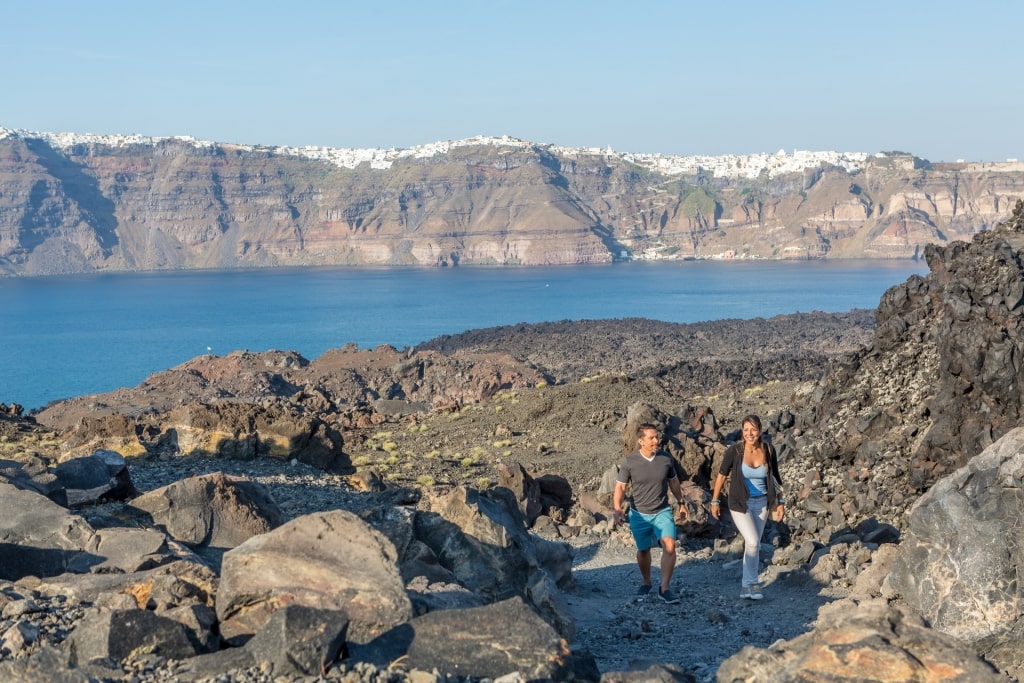The best time to visit Santorini is late spring and early fall, which bookend the crescent-shaped volcanic island’s long summer season.
One of the most southerly islands in the Cyclades chain, Santorini basks in hot sunshine from June to September, with little rain. There’s usually a breeze, though, taking the edge off the heat in July and August.
These peak months are when many visitors head to the beach, although there’s plenty else to see around the island, from the exquisite town of Oia to the spectacular archaeological site of Akrotiri.
Visiting Santorini by Season
Summer

Oia
June, July, and August are peak season in Santorini, particularly when European schools are on vacation in July and August. Temperatures average 85°F (29°C) in July and August, tempered by occasionally strong sea breezes.
This is the time to explore Santorini’s beaches, some of which are composed of black sand. Plan your sightseeing for early morning before the heat becomes too intense, and take up a position in a clifftop bar in Fira to enjoy the most spectacular sunsets in all of Greece.
Read: Best Islands to Visit in August
Fall
September and October is arguably the best time to go to Santorini. The sea is still warm for swimming, the summer crowds have thinned out, and the occasional cloudy sky makes for even more dazzling sunsets.
September still basks in average highs of 79°F (26°C), with October a balmy 73°F (23°C), although November represents the end of the season.

Oia
Winter
Santorini really is a seasonal destination, and from December to February, the island hunkers down against strong winds and rain. Many restaurants and bars close. Average highs in January and February, the coldest months, are around 57°F (14°C). Visit now and you’ll feel as though you have the island to yourself.
Spring
As chilly March fades into warmer April and May, the temperatures rise and spring flowers are in bloom. Green shoots appear on the many vines as Santorini wakes up from winter.
By May, the island basks in average highs of 73°F (23°C). Both April and May are great months for hiking in Greece—and you’ll get the most out of sightseeing, too.

Nea and Palea Kameni
When Is Rainy Season?
The winter months of December to February are the rainiest time in Santorini, which enjoys a typical Mediterranean climate of long, hot summers and short, cool winters. January is usually the wettest month, receiving 4.5 inches (115mm) of rain, welcomed by the locals to irrigate their vines and other crops.
When Is High Season?
Late June, as well as all of July and August, are high season on Santorini, when the Mediterranean island is abuzz with visitors and the beaches and clifftop restaurants busy.
From late July, the vedema, or wine harvest, begins. It’s a time of great celebration that carries on throughout August. This is a great time to get involved with the island’s renowned viticulture scene; you may even have a chance to try grape treading.

Wine tasting in Santorini
When Is Shoulder Season?
Spring and fall are shoulder seasons in Santorini, with May, June, September, and October the best time to visit, with fine weather but less intense heat and fewer people. Come in September if you want to swim in some of Greece’s best beaches, as the Aegean will have had all summer to warm up.
When Is Low Season?
November to March represents low season in Santorini, when the island can be buffeted by strong winds and the owners of the many bars and restaurants take a much-needed break.
Tempted to experience Santorini’s dramatic landscape and fiery sunsets? Browse Celebrity’s cruises to Santorini and book your Greek adventure.



